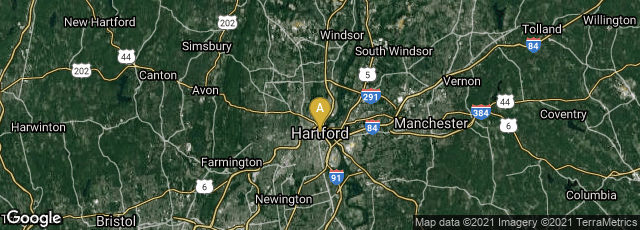
A: East Hartford, Connecticut, United States
Mechanical typesetting and type distributing remained an inventor's challenge till the end of the 19th century. Perhaps the most elaborate effort to mechanize and nearly robotize manual typesetting and distributing of lead type was the effort in which Mark Twain lost a great deal of money.
Between 1872 and 1888 James W. Paige developed the Paige Compositor, the first machine to simultaneously set, justify, and distribute foundry type from a common case using only one operator. The machine which Paige patented in 1874, was immensely complex, containing 18,000 parts and numerous bearings, cams, and springs. It could average 12,000 ems per hour, but had "continual need for adjustment based upon trial and error."
Notably, American writer Mark Twain, who must have been fascinated by the complexity and potential of this mechanism, sank $300,000 into the development of this machine, of which only two were ever built, one of which survives in Mark Twain House in Hartford, Connecticut.
"The surviving machine, the first of two, was completed in 1887 under the direction of Charles E. Davis, a mechanical engineer who invented an automatic justifier to be used with the Paige machine. The second machine, completed in 1894, successfully participated that year in a sixty-day trial at the Chicago Herald -- its only commercial application" (https://www.asme.org/about-asme/who-we-are/engineering-history/landmarks/11-paige-compositor).
During the overly long development of the Paige Compositor the printing industry moved from continuously recycling foundry type, which required the time-consuming process of returning each letter to the case, toward machines such as Linotype and Monotype that melted down used type and cast new type for each printing project.
Mark Twain's relationship with developments in printing and publishing are the subject of a book by Bruce Michelson: Printer's Devil: Mark Twain and the American Publishing Revolution, Berkeley & Los Angeles: University of California Press, 2006.